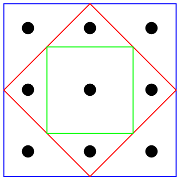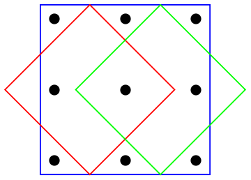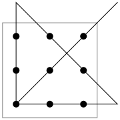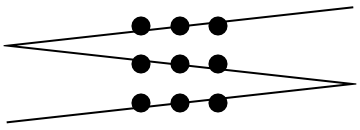Sleeping Beauty Wants the Prize Money
by Tanya Khovanova and Alexey Radul
We already blogged about the Sleeping beauty problem three times: The Sleeping Beauty Problem, Sleeping Beauty Meets Monty Hall, and Sleeping Beauty and Mondays. The posts were more than ten years ago, but the mathematical community seems to continue being stuck on this problem. So we come back to it.
Problem. Sleeping Beauty participates in the following experiment. On Sunday, she is put to sleep, and a fair coin is flipped. Regardless of the result of the coin flip, she is awakened on Monday and asked whether she thinks the coin was heads or not. If the coin was tails, however, she is put back to sleep with her memory erased, awakened on Tuesday and asked the same question again. She knows the protocol. She is awakened one morning: What is her probability that the coin was heads?
Let’s raise the stakes a little bit. Suppose a prize of $1K is set aside for her correct guess of a flip. What should be her strategy?
The problem is ambiguous. We didn’t tell you how the prizes are awarded. We see several reasonable scenarios:
- Sleeping Beauty gets the prize if she is right on Monday.
- Sleeping Beauty gets the prize if she is right on Tuesday.
- Sleeping Beauty gets the prize for every correct answer.
- Sleeping Beauty gets the prize if she guesses correctly all the questions she is asked.
- Sleeping Beauty gets the prize if she is right at least once.
- Sleeping Beauty gets the prize if she is right for a randomly chosen answer. This means, if the coin is heads, she get the prize if she is right on Monday. If the coin is tails, then one of her two answers is chosen randomly, and she gets the prize if she is correct.
Because of selective amnesia, she can’t distinguish between her awakenings, thus her strategy has to be the same at every awakening. That is, she should say heads with probability p. The exact number depends on the scenario:
- First scenario: It doesn’t matter what value of p she chooses. With a probability 1/2, she wins one grand.
- Second scenario: She should choose p = 0. Her best strategy is to always say tails. With a probability 1/2 (when the coin is tails), she wins one grand.
- Third scenario: She should choose p = 0. Her best strategy is to always say tails. With a probability 1/2, she wins two grand.
- Fourth scenario: p = 0 or p = 1. Her best strategy is to stick with the same answer all the time; and it doesn’t matter what answer she chooses. With probability 1/2, she wins one grand.
- Fifth scenario: She should choose p = 1/2. Her best strategy is to flip a coin herself each time and say tails with probability of 1/2. This way, her chances to win one grand are 5/8.
- Sixth scenario: It doesn’t matter what value of p she chooses. With a probability 1/2, she wins one grand.
We see that though she is asked to guess the outcome of the coin flip and is rewarded for guessing correctly, her strategy is not to try to maximize the probability of guessing correctly each time. The strategy depends on the reward protocol.
We see that in the first and the sixth scenario, she gets one guess per coin flip. Not surprisingly, it doesn’t matter what she chooses to do. The classic Sleeping Beauty problem corresponds to the third scenario. If she wants to improve her chances per guess, she should favor tails.
Let’s look at the following variation.
Problem. Suppose Sleeping Beauty’s goal is to guess right once, but if she guesses right on Monday, she wins and is not put back to sleep. If she guesses wrong on Monday and the coin was tails, she is put back to sleep with he memory erased. That is, she is given a second chance. What’s the right strategy in this case?
As her memory is erased, the only strategy is to do the same thing each time she is awakened. That is to guess heads with probability p. Thus, she guesses correctly at least once with probability p/2 + (1–p)/2 + p(1–p)/2. We see that whatever strategy she chooses, she guesses with probability one half on Monday. She gets an additional chance of p(1–p)/2 to get a correct guess on Tuesday. Her worst strategy is to always guess tails or heads. Her best strategy is to flip a fair coin each time. This way, she has an additional probability of 1/8 to win on Tuesday.
Here is a question to our readers, for the best strategy above, what is her probability on waking that the coin is actually heads? Here is the problem more formally.
Problem. Sleeping Beauty participates in the following experiment. On Sunday, she is put to sleep, and a fair coin is flipped. Regardless of the result of the coin flip, she is awakened on Monday and asked whether she thought the coin was heads or not. Sleeping Beauty answers by flipping a fair coin. If she guesses correctly, or if the Sunday coin was heads, the experiment ends. If the Sunday coin was tails and different from her guess, she is put back to sleep with her memory erased, awakened on Tuesday, and asked the same question again. She knows the protocol. She is awakened one morning: What is her probability that the Sunday coin was heads?
Share:








